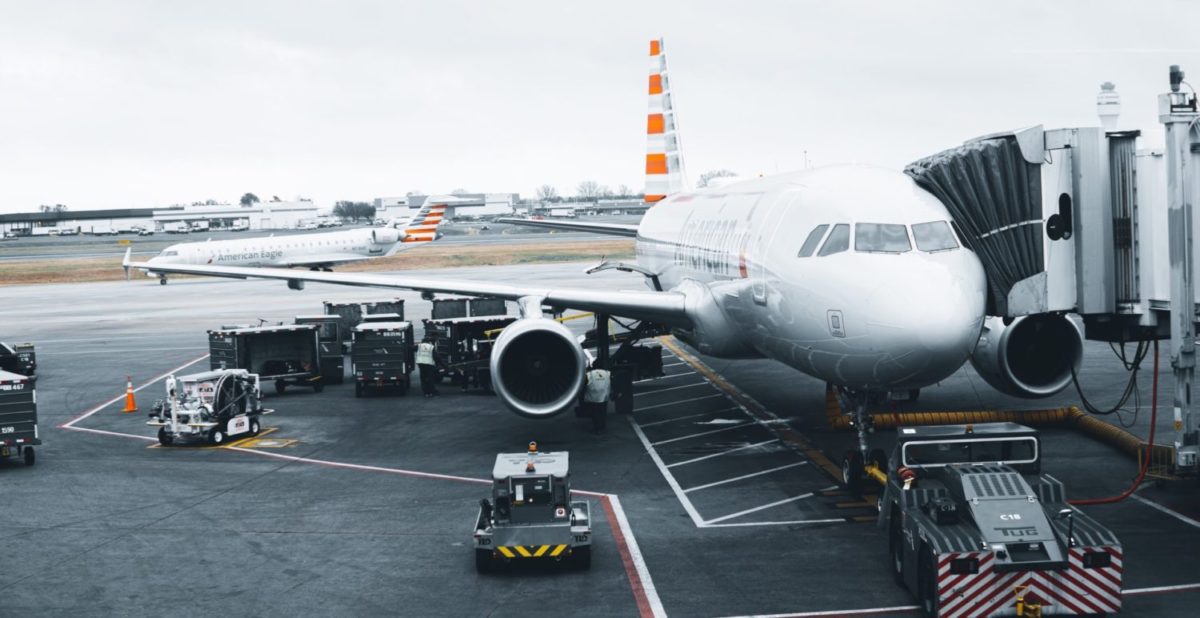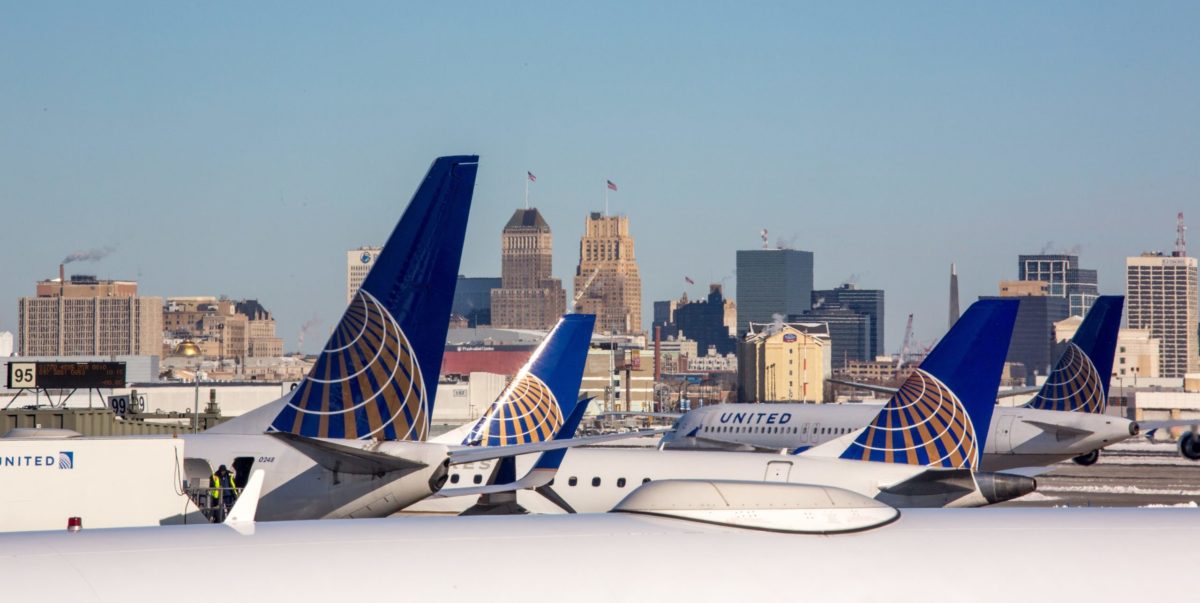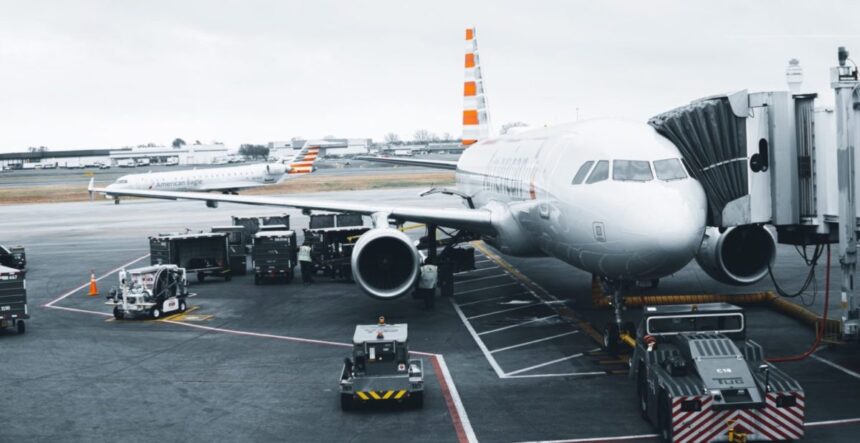You’re not seeing things: Flights are priced very differently based on your home airport, and some cities are worse than others. We’re looking at you, Salt Lake City! And you, Charlotte. And you, Minneapolis.
These cities and several others throughout the country all have one thing in common: They’re major hub airports for the big three airlines. And that means one airline dominates the competition.
Airlines love this. When you rule a market like this, you can name your own price. And that’s exactly why you see astronomically high airfare from these places.
When you live in a city like this and are constantly staring down sky-high flight prices, we have a name for it. You are what’s called a “Hub Captive.”
When your other options are limited, the dominant airline charges whatever it wants for the convenience of flying nonstop … or to lure in travelers who are blindly loyal. American, Delta, and United all do this from their hub cities to great bottom line success, and to the great pain of local travelers. If you find your travel plans blunted by hub captivity, there are easy ways to escape and keep your travels rolling in 2025 and beyond.
So let’s Shawshank this thing and break free from hub captivity. Here’s how.
Which Airports Are Worst?
If a single airline operates more than half of the capacity in and out of a market, you can reasonably make a claim for hub captivity. There are, of course, very small regional airports where there’s only a single airline operating or where one airline dominates more than others, and in both of those cases, low fares are also going to be hard to come by. In this case, however, I looked at the major hub airports for the major U.S. airlines and determined which ones were most dominated by a single airline.
I used Cirium data from the year 2024, analyzing the percentage share of each airline by available seat miles or ASMs – the most reliable metric to count flying capacity.

Without further ado, the worst seven airports in the U.S. for hub captivity are…
- Charlotte (CLT) – 87% American
- Atlanta (ATL) – 73.3% Delta
- Salt Lake City (SLC) – 73% Delta
- Detroit (DTW) – 71% Delta
- Minneapolis (MSP) – 69% Delta
- Philadelphia (PHL) – 68% American
- Dallas (DFW, DAL) – 63% American
If you live in or near one of these seven metro areas, congratulations! You’re feeling the pain of expensive airfare every day because of one airline’s utter dominance in your market.
All of these numbers are staggering, but the fact that American Airlines operates 87% of all flying in and out of Charlotte (CLT) is mind-boggling. The Charlotte traveler is nearly doomed at hub dominance levels like that.
Here are the other major hub airport markets I analyzed and their highest-percentage operator. (Note: I grouped together major markets with multiple airports.)
- Boston (BOS) – 22% Delta
- Chicago (ORD, MDW) – 32% United
- Denver (DEN) – 46% United
- Houston (IAH, HOU) – 52% United
- Los Angeles (LAX) – 13% Delta
- Miami (MIA) – 33% American
- New York City (JFK, EWR, LGA) – 20% United
- Phoenix (PHX) – 41% American
- San Francisco (SFO) – 43% United
- Seattle (SEA) – 40% Alaska
- Washington, D.C. (IAD, DCA) – 38% United
As you can see, while one airline does significantly better than the rest at most of these airports, all but Houston (IAH, HOU) have a majority share of the traffic operated by other airlines.

The most important factor here is the competition in these markets. In Boston (BOS), JetBlue puts pressure on Delta. In Chicago (ORD, MDW), Southwest and American are doing the same with United. In fact, Southwest is putting most of the pressure on many of these listed airports, including Denver (DEN), Houston (HOU), and Phoenix (PHX).
Competition means everything when it comes to flight prices, and without competition, travelers in places like Charlotte are going to feel the pain when American gets to charge whatever it wants.
How to Break Free From Hub Captivity?
According to Cirium’s fare data from 2023 (the most recent full-year of information), the average one-way airfare (before taxes and fees) to or from Charlotte (CLT) was $197.58. On just American Airlines flights that number was $225.27. The same year, the national airfare average was just $179.24. While it may not seem significant, that’s about $46 per person, per direction that American believes it can charge extra based on the fact that it so thoroughly dominates Charlotte (CLT) airport.
That’s hub captivity, for you. Without true competition, American can name its price on many routes out of Charlotte. Delta is doing the same thing in Atlanta (ATL), Salt Lake City (SLC), Detroit (DTW), and Minneapolis (MSP), too.
If you want to give up and fork over the extra $46 per flight, be our guest. You are, however, proving to American that they can keep fleecing you and other travelers over and over again because you wouldn’t put up a fight.
There’s a better way.
Ditch Your Loyalty – Shop Around
You’re not going to want to hear this, but it’s time to ditch your loyalty to the airline that’s holding you hostage.
I know it’s a tough pill to swallow because I’m part of the problem. As a Minneapolis-based company, many of us at Thrifty Traveler have a weird Stockholm Syndrome with Delta – where we loathe our captor for its stifling high airfare, but also can’t quit the airline because of the convenience despite the cost. But that’s changing. Our Founder, Jared, decided he’s done with Delta loyalty. I – and many others on our team – did too, because, unless money is no object, the numbers no longer add up.
In Salt Lake City (SLC), travelers have been dealing with this for years, too. If you pledge blind loyalty, by starting and ending your search with Delta, you’re going to pay for it. Here’s my recommendation, start your search with Google Flights instead.
Let’s say, for instance, you want to fly to Puerto Rico (SJU) for a getaway this spring. If you head to Delta to look for flights, you’re looking at this:

Your choices here are…rough. You can bend the knee to almighty Delta and drop $507 roundtrip (or worse) on basic economy flight to Puerto Ricoe. But I think you should just take your search over to Google Flights instead. Let’s do the same airports on the same days.

Even with filters on to take out 2-stop itineraries, remove some low-cost airlines, to include a carry-on bag, and to cut out lengthy layovers, you’ll find that two of the other major airlines are willing to fly you from SLC to SJU for a few hundred dollars less.
Savings like this could mean the difference between taking an extra vacation this year or not. Or you could take those savings and spend them on a few nice meals or an upgrade to a suite at the hotel. It’s your money, just don’t make it Delta’s money if someone else will fly you for way, way less.
Use Your Points & Miles
Using your points and miles to get around high airfare is what we’re all about here at Thrifty Traveler. It’s the first thing I do when I look to book flights that I otherwise couldn’t afford.
Like other hub captives, Delta is alluring because of its route network out of my home airport in Minneapolis. You can fly nonstop to places like Tokyo (HND), Turks & Caicos (PLS), and even Copenhagen (CPH) from Minneapolis (MSP). The latest awesome addition to Delta’s MSP route roster is Rome, Italy (FCO)!
When this launched, many Minneapolis travelers were ecstatic to have a nonstop way to fly to Italy…but then we looked at the prices…

If you wanted to bring a friend, a partner, or *gulp* the whole family to Rome at those prices, you’re looking at thousands and thousands of dollars before you even start thinking about lodging, food, and activities. It’s just not doable for 99% of travelers – and the remaining 1% are doing us all a disservice by paying such insanely high fares for a basic economy ticket in the first place.
That’s when you turn to your points and miles. Let’s check on the same exact flights using Delta’s partner Virgin Atlantic.
That’s more like it! For 60,000 Virgin Atlantic miles (or just 47,000 if you get in on a 30% transfer bonus) and $120 in taxes and fees per person is a whole lot easier to stomach! You can transfer points to Virgin from Amex, Bilt, Capital One, Chase, Citi, or Wells Fargo, too. And when you book through Virgin, you book straight into the Main Cabin, giving you a free checked bag and seat selection!
We just sent this flight deal alert to our Thrifty Traveler Premium flight deal alert subscribers, and we’re already hearing from several of them who have this awesome flight booked for June and July of 2025! It’s a perfect workaround to living in a hub captive environment. You still get to fly from your home airport on the nonstop route, but you don’t have to pay big, hub captive prices to make it happen.
Jailbreak! Positioning Flights are Your Friend
Sometimes, you just have to take matters into your own hands and change your own fortunes when stuck in hub captivity. The best way to do this is to book what we call a positioning flight to find the best deal.
The premise is simple: To take advantage of the lowest fares to your desired destination, book the cheapest flight you can to a different airport first.
Let’s say you’re trying to fly from Salt Lake City (SLC) to Tokyo, Japan (TYO) this winter, but fares are getting dangerously close to $1,000 roundtrip.

While these fares aren’t terrible, you can do better. Because flights from Los Angeles (LAX) to Tokyo are as cheap as $598 roundtrip right now!
And to get to Los Angeles (LAX) from Salt Lake City (SLC) on a positioning flight, you’re looking at less than $200 roundtrip, too.
Your total cost, with a positioning flight, comes in just shy of $800 roundtrip – a savings of more than $115 compared to booking the roundtrip from Salt Lake City. When you’re price sensitive or are booking for a big crew, those savings can add up fast.
Just be sure to book yourself a long layover in Los Angeles (LAX) in case something goes wrong with your first flight. The upside to booking the roundtrip flight for a higher price is that your connections are protected, meaning they’ll rebook you if something goes wrong. If you use positioning flights, you’re on your own to figure things out if and when things go south.
Be Patient & Flexible
The airfare situation in hub captive cities can feel dire, but it might not be as bad as it sometimes seems. To beat airlines at their own game, it pays to stay patient and to be as flexible as possible with your travel dates.
Let’s revisit our poor friends in Charlotte again, shall we? While fares are often higher for Charlotte (CLT) travelers, they also get plenty of cheap flights. Just look at this search I ran for Thrifty Traveler Premium flight deals including Charlotte (CLT) departures since Jan. 1. We’ve sent more than 20 flight deal alerts to members on our Charlotte list, including to places like Tokyo, Brazil, Iceland Chicago, Orlando, Sicilty, Belize, and more! It included Business Class points and miles deals, AA miles deals, and even a mistake fare!
What I’m saying is that you shouldn’t give up just because you live in one of these hub captive cities. Subscribing to flight deal alerts like ours is a great way to outsource airfare searches to the pros. We have a team of 10 flight deal analysts running near around-the-clock searches for airfare. I promise you can’t keep up with how often we’re searching to help hub captives like you.
Whether or not you subscribe, I’d recommend employing the following two strategies to sift through high airfare at dominated hubs:
One: Be patient – Sometimes you can wait the airlines out. When their seats aren’t filled between 3-8 months ahead of travel, sometimes the prices drop. (When things don’t go their way, the airlines come crawling back!) This is risky if you really want or need to take a trip, because it doesn’t always pay off – but if you can be patient, you might score a deal.
Two: Be flexible – Adjusting the dates or times you travel by just day or hour can make hundreds of dollars of difference. If you want to fly Friday night and come back Sunday night, you’re going to pay extra to fly the busiest times. If you can shift your travel to Saturday to Monday or Thursday to Saturday, you’ll pay significantly less. The same goes for the early morning flight – if you can get out of bed, the savings are enormous.
Bottom Line
When airlines dominate a hub airport, they get to set the market price for airfare in a particular city. We call travelers there “hub captives.”
While hub captives have it tougher than travelers in cities with healthy competition, not all is lost for flyers in places like Charlotte (CLT), Atlanta (ATL), Salt Lake City (SLC), Detroit (DTW), or Minneapolis (MSP). There are some tried and true methods to help you break free and travel for less this year and beyond.










